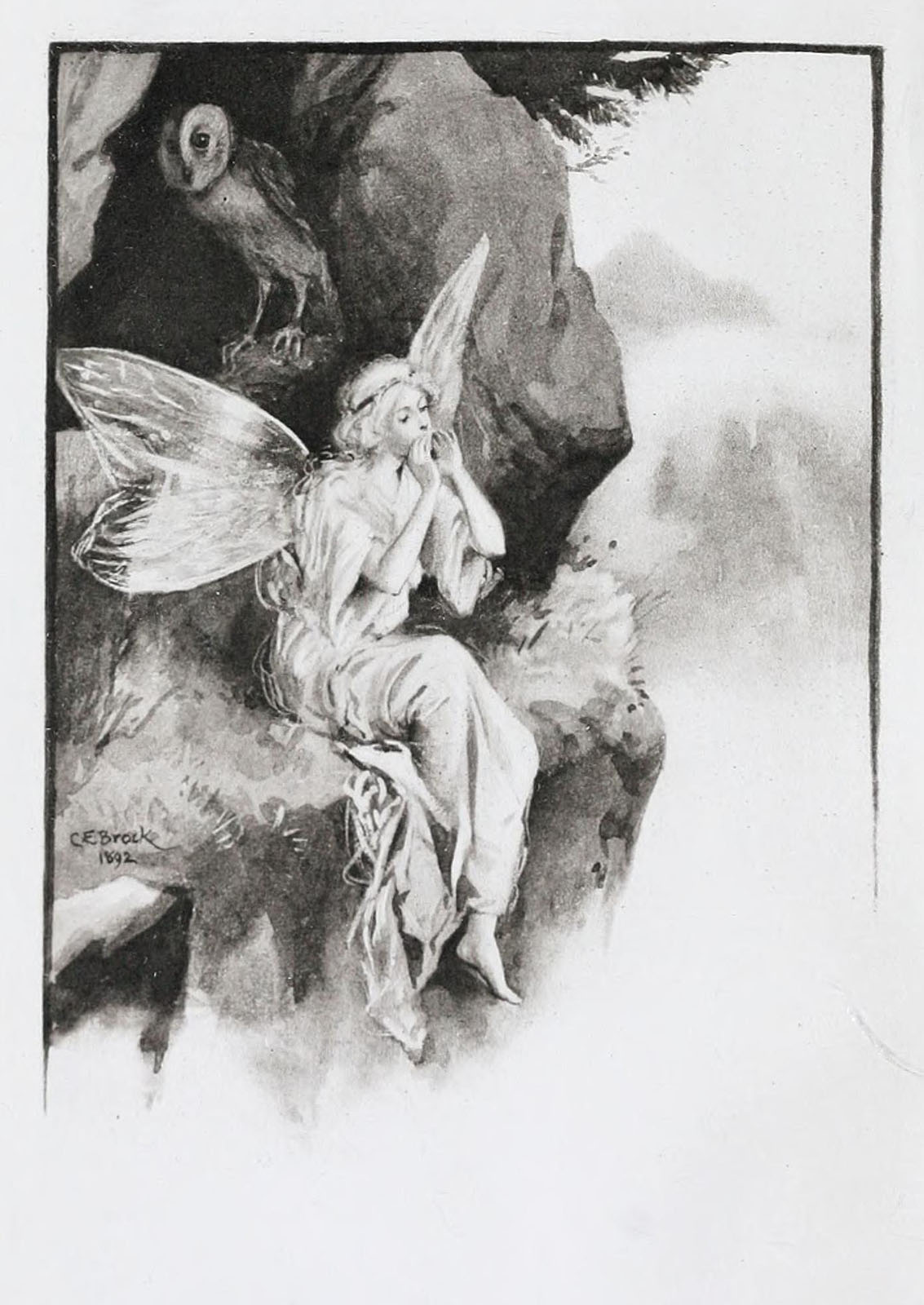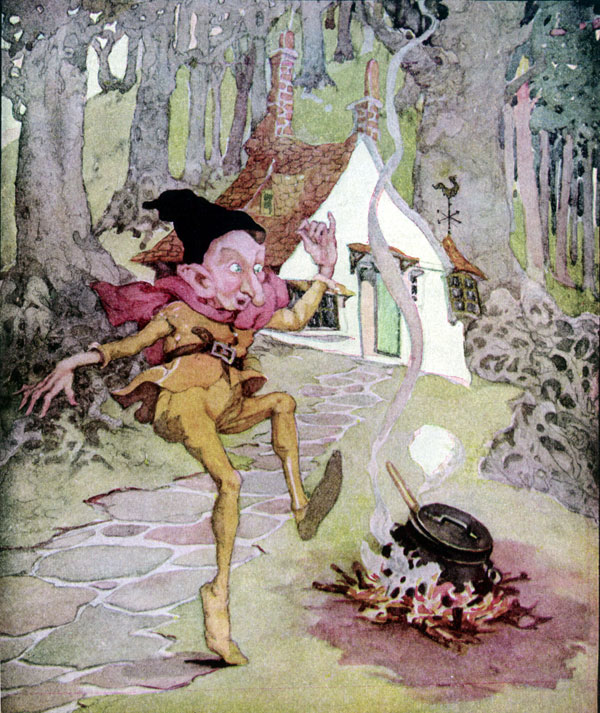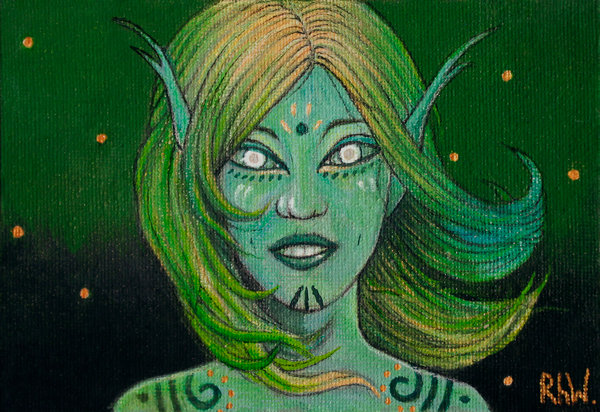|
Seelie
Seelie is a term for fairies in Scottish folklore, appearing in the form of seely wights or The Seelie Court. The Northern and Middle English word (also , , ), and the Scots form , mean "happy", "lucky" or "blessed." Despite their name, the seelie folk of legend could be morally ambivalent and dangerous. Calling them "seelie," similar to names such as "good neighbors," may have been a euphemism to ward off their anger. Etymology The word derives from the Old English and and the Proto-West Germanic ''*sālīg'' (“blissful, happy”). The Modern Standard English word " silly" is also derived from this root. The antonym, ''unseely'' (also ''unsall'', ''unsell)'' means "unhappy", "misfortunate" or "unholy." Seelie wights Many Scottish ballads and tales tell of "Seilie wichts" or "wights," meaning blessed beings. Julian Goodare theorized that these were legendary nature spirits, similar to but distinct from fairies. Goodare additionally hypothesized that there was a sixteent ... [...More Info...] [...Related Items...] OR: [Wikipedia] [Google] [Baidu] |
Classifications Of Fairies
Fairies, particularly those of Irish, English, Scottish and Welsh folklore, have been classified in a variety of ways. Classifications – which most often come from scholarly analysis, and may not always accurately reflect local traditions – typically focus on behavior or physical characteristics. Early classifications of fairies Germanic lore featured light and dark elves ( Ljósálfar and Dökkálfar). This may be roughly equivalent to later concepts such as the Seelie and Unseelie. In the mid-thirteenth century, Thomas of Cantimpré classified fairies into ''neptuni'' of water, ''incubi'' who wandered the earth, ''dusii'' under the earth, and ''spiritualia nequitie in celestibus'', who inhabit the air. In 1566, John Walsh of Devonshire – on trial for witchcraft – said that there were three kinds of "feries": white, green and black. Good and evil Seelie and Unseelie Courts In Scottish folklore, faeries are divided into the Seelie Court and the Unseelie Court. ... [...More Info...] [...Related Items...] OR: [Wikipedia] [Google] [Baidu] |
Fairies
A fairy (also fay, fae, fey, fair folk, or faerie) is a type of mythical being or legendary creature found in the folklore of multiple European cultures (including Celtic, Slavic, Germanic, English, and French folklore), a form of spirit, often described as metaphysical, supernatural, or preternatural. Myths and stories about fairies do not have a single origin, but are rather a collection of folk beliefs from disparate sources. Various folk theories about the origins of fairies include casting them as either demoted angels or demons in a Christian tradition, as deities in Pagan belief systems, as spirits of the dead, as prehistoric precursors to humans, or as spirits of nature. The label of ''fairy'' has at times applied only to specific magical creatures with human appearance, magical powers, and a penchant for trickery. At other times it has been used to describe any magical creature, such as goblins and gnomes. ''Fairy'' has at times been used as an adjective, with a m ... [...More Info...] [...Related Items...] OR: [Wikipedia] [Google] [Baidu] |
Fairies
A fairy (also fay, fae, fey, fair folk, or faerie) is a type of mythical being or legendary creature found in the folklore of multiple European cultures (including Celtic, Slavic, Germanic, English, and French folklore), a form of spirit, often described as metaphysical, supernatural, or preternatural. Myths and stories about fairies do not have a single origin, but are rather a collection of folk beliefs from disparate sources. Various folk theories about the origins of fairies include casting them as either demoted angels or demons in a Christian tradition, as deities in Pagan belief systems, as spirits of the dead, as prehistoric precursors to humans, or as spirits of nature. The label of ''fairy'' has at times applied only to specific magical creatures with human appearance, magical powers, and a penchant for trickery. At other times it has been used to describe any magical creature, such as goblins and gnomes. ''Fairy'' has at times been used as an adjective, with a m ... [...More Info...] [...Related Items...] OR: [Wikipedia] [Google] [Baidu] |
Allison Gross
"Allison Gross" (also known as Alison Cross) is a traditional ballad, catalogued as Child Ballad #35. It tells the story of "the ugliest witch in the north country" who tries to persuade a man to become her lover and then punishes him by a transformation. Synopsis Allison Gross, a hideous witch, tries to bribe the narrator to be her "leman". She combed his hair, first. When a scarlet mantle, a silk shirt with pearls, and a golden cup all fail, she blows on a horn three times, making an oath to make him regret it; she then strikes him with a silver wand, turning him into a wyrm ( dragon) bound to a tree. His sister Maisry comes to him to comb his hair. One day the Seelie Court comes by, and a queen strokes him three times, turning him back into his proper form. Motifs The horn motif is not clear. In "The Laily Worm and the Machrel of the Sea", the witch uses it after the transformation to summon her victim, but nothing appears to stem from it here.Francis James Child, ''The E ... [...More Info...] [...Related Items...] OR: [Wikipedia] [Google] [Baidu] |
Middle English
Middle English (abbreviated to ME) is a form of the English language that was spoken after the Norman conquest of 1066, until the late 15th century. The English language underwent distinct variations and developments following the Old English period. Scholarly opinion varies, but the ''Oxford English Dictionary'' specifies the period when Middle English was spoken as being from 1150 to 1500. This stage of the development of the English language roughly followed the High to the Late Middle Ages. Middle English saw significant changes to its vocabulary, grammar, pronunciation, and orthography. Writing conventions during the Middle English period varied widely. Examples of writing from this period that have survived show extensive regional variation. The more standardized Old English language became fragmented, localized, and was, for the most part, being improvised. By the end of the period (about 1470) and aided by the invention of the printing press by Johannes Gutenberg in 14 ... [...More Info...] [...Related Items...] OR: [Wikipedia] [Google] [Baidu] |
Redcap
The redcap (or powrie) is a type of malevolent, murderous goblin found in Border folklore. He is said to inhabit ruined castles along the Anglo-Scottish border, especially those that were the scenes of tyranny or wicked deeds and is known for soaking his cap in the blood of his victims.Henderson, William (1879). ''Folklore of the Northern Counties of England and the Borders'' (2nd ed.) W. Satchell, Peyton & Co. p. 253.Briggs, Katharine (1976). ''An Encyclopedia of Fairies''. Pantheon Books. p. 339. . He is also known as Redcomb and Bloody Cap. Description and behaviour Redcap is depicted as "a short, thickset old elf with long prominent teeth, skinny fingers armed with talons like eagles, large eyes of a fiery red colour, grisly hair streaming down his shoulders, iron boots, a pikestaff in his left hand, and a red cap on his head". When travellers take refuge in his lair, he flings huge stones at them and if he kills them, he soaks his cap in their blood, giving it a crimson hue. ... [...More Info...] [...Related Items...] OR: [Wikipedia] [Google] [Baidu] |
Northumbria
la, Regnum Northanhymbrorum , conventional_long_name = Kingdom of Northumbria , common_name = Northumbria , status = State , status_text = Unified Anglian kingdom (before 876)North: Anglian kingdom (after 876)South: Danish kingdom (876–914)South: Norwegian kingdom (after 914) , life_span = 654–954 , flag_type = Oswald's Stripes, the provincial flag of Northumbria and red was previously purple , image_coat = , image_map = Map_of_the_Kingdom_of_Northumbria_around_700_AD.svg , image_map_size = 250 , image_map_caption = Northumbria around 700 AD , image_map2 = , image_map2_size = , image_map2_caption = , government_type = Monarchy , year_start = 653 , year_end = 954 , event_end = South is annexed by Kingdom of England , event1 = South is annexed by the Danelaw , date_even ... [...More Info...] [...Related Items...] OR: [Wikipedia] [Google] [Baidu] |
Tom Tit Tot
"Rumpelstiltskin" ( ; german: Rumpelstilzchen) is a German fairy tale. It was collected by the Brothers Grimm in the 1812 edition of ''Children's and Household Tales''. The story is about a little imp who spins straw into gold in exchange for a girl's firstborn child. Plot In order to appear superior, a miller brags to the king and people of the kingdom he lives in by claiming his daughter can spin straw into gold.Some versions make the miller's daughter blonde and describe the "straw-into-gold" claim as a careless boast the miller makes about the way his daughter's straw-like blond hair takes on a gold-like lustre when sunshine strikes it. The king calls for the girl, locks her up in a tower room filled with straw and a spinning wheel, and demands she spin the straw into gold by morning or he will have her killed.Other versions have the king threatening to lock her up in a dungeon forever, or to punish her father for lying. When she has given up all hope, a little imp-like ... [...More Info...] [...Related Items...] OR: [Wikipedia] [Google] [Baidu] |
Welsh Marches
The Welsh Marches ( cy, Y Mers) is an imprecisely defined area along the border between England and Wales in the United Kingdom. The precise meaning of the term has varied at different periods. The English term Welsh March (in Medieval Latin ''Marchia Walliae'') was originally used in the Middle Ages to denote the marches between England and the Principality of Wales, in which Marcher lords had specific rights, exercised to some extent independently of the king of England. In modern usage, "the Marches" is often used to describe those English counties which lie along the border with Wales, particularly Shropshire and Herefordshire, and sometimes adjoining areas of Wales. However, at one time the Marches included all of the historic counties of Cheshire, Shropshire, Herefordshire, Worcestershire and Gloucestershire. In this context the word ''march'' means a border region or frontier, and is cognate with the verb "to march," both ultimately derived from Proto-Indo-European ' ... [...More Info...] [...Related Items...] OR: [Wikipedia] [Google] [Baidu] |
Tylwyth Teg
(Middle Welsh for "Fair Family"; ) is the most usual term in Wales for the mythological creatures corresponding to the fairy folk of English and Continental folklore and the Irish . Other names for them include ("Blessing of the Mothers"), and . Origins The term is first attested in a poem attributed to the 14th-century , in which the principal character gets perilously but comically lost while going to visit his girlfriend: "" ("(The) weak enchantment (now) flees, / (the) long burden of the ''Tylwyth Teg'' (departs) into the mist"). Attributes In later sources the are described as fair-haired and covet golden-haired human children whom they kidnap, leaving changelings (or , ) in their place. They dance and make fairy rings and they live underground or under the water. They bestow riches on those they favour but these gifts vanish if they are spoken of, and fairy maidens may become the wives of human men. These fairy wives are however still bound by traditional taboos. The ... [...More Info...] [...Related Items...] OR: [Wikipedia] [Google] [Baidu] |
Rumpelstiltskin
"Rumpelstiltskin" ( ; german: Rumpelstilzchen) is a German fairy tale. It was collected by the Brothers Grimm in the 1812 edition of ''Children's and Household Tales''. The story is about a little imp who spins straw into gold in exchange for a girl's firstborn child. Plot In order to appear superior, a miller brags to the king and people of the kingdom he lives in by claiming his daughter can spin straw into gold.Some versions make the miller's daughter blonde and describe the "straw-into-gold" claim as a careless boast the miller makes about the way his daughter's straw-like blond hair takes on a gold-like lustre when sunshine strikes it. The king calls for the girl, locks her up in a tower room filled with straw and a spinning wheel, and demands she spin the straw into gold by morning or he will have her killed.Other versions have the king threatening to lock her up in a dungeon forever, or to punish her father for lying. When she has given up all hope, a little imp-like man ... [...More Info...] [...Related Items...] OR: [Wikipedia] [Google] [Baidu] |
Houghton Mifflin Harcourt
Houghton Mifflin Harcourt (; HMH) is an American publisher of textbooks, instructional technology materials, assessments, reference works, and fiction and non-fiction for both young readers and adults. The company is based in the Financial District, Boston, Boston Financial District. It was formerly known as Houghton Mifflin Company, but it changed its name following the 2007 acquisition of Harcourt (publisher), Harcourt Publishing. Prior to March 2010, it was a subsidiary of EMPG, Education Media and Publishing Group Limited, an Irish-owned holding company registered in the Cayman Islands and formerly known as Riverdeep. History Ticknor and Allen, 1832 In 1832, William Ticknor and John Allen purchased a bookselling business in Boston and began to involve themselves in publishing; James T. Fields joined as a partner in 1843. Fields and Ticknor gradually gathered an impressive list of writers, including Ralph Waldo Emerson, Nathaniel Hawthorne, and Henry David Thoreau. The d ... [...More Info...] [...Related Items...] OR: [Wikipedia] [Google] [Baidu] |








_1976%2C_MiNr_Kleinbogen_2187-2192.jpg)